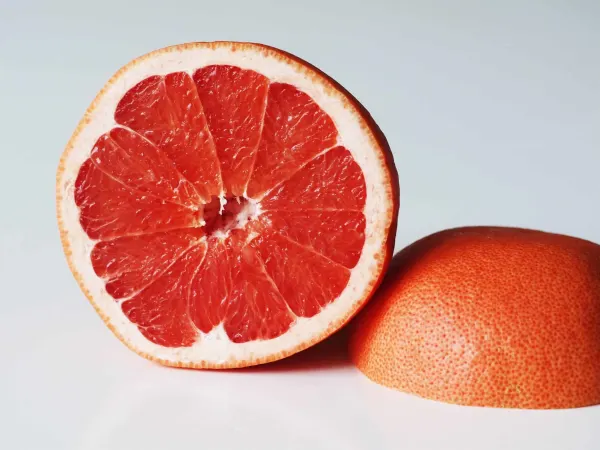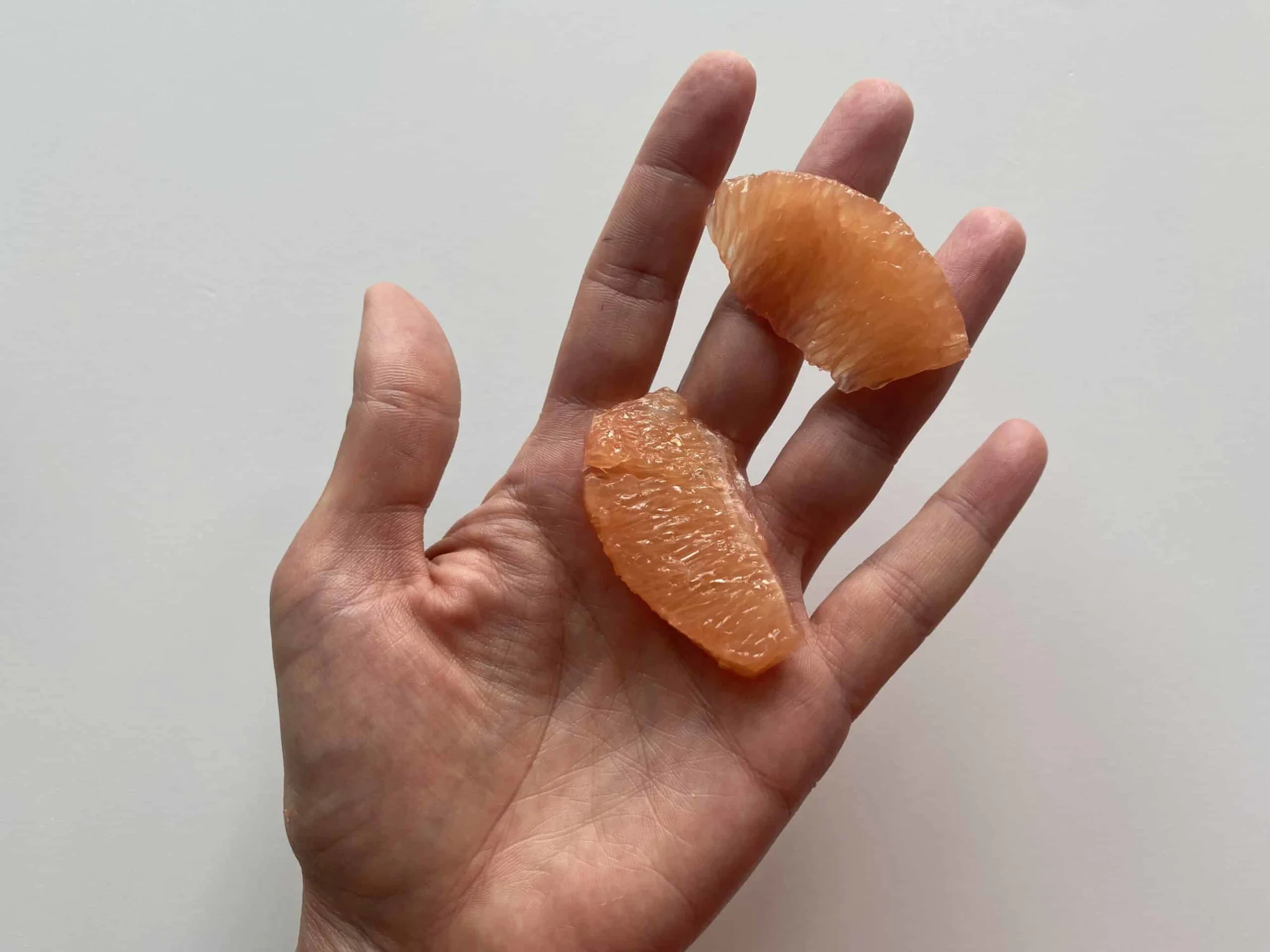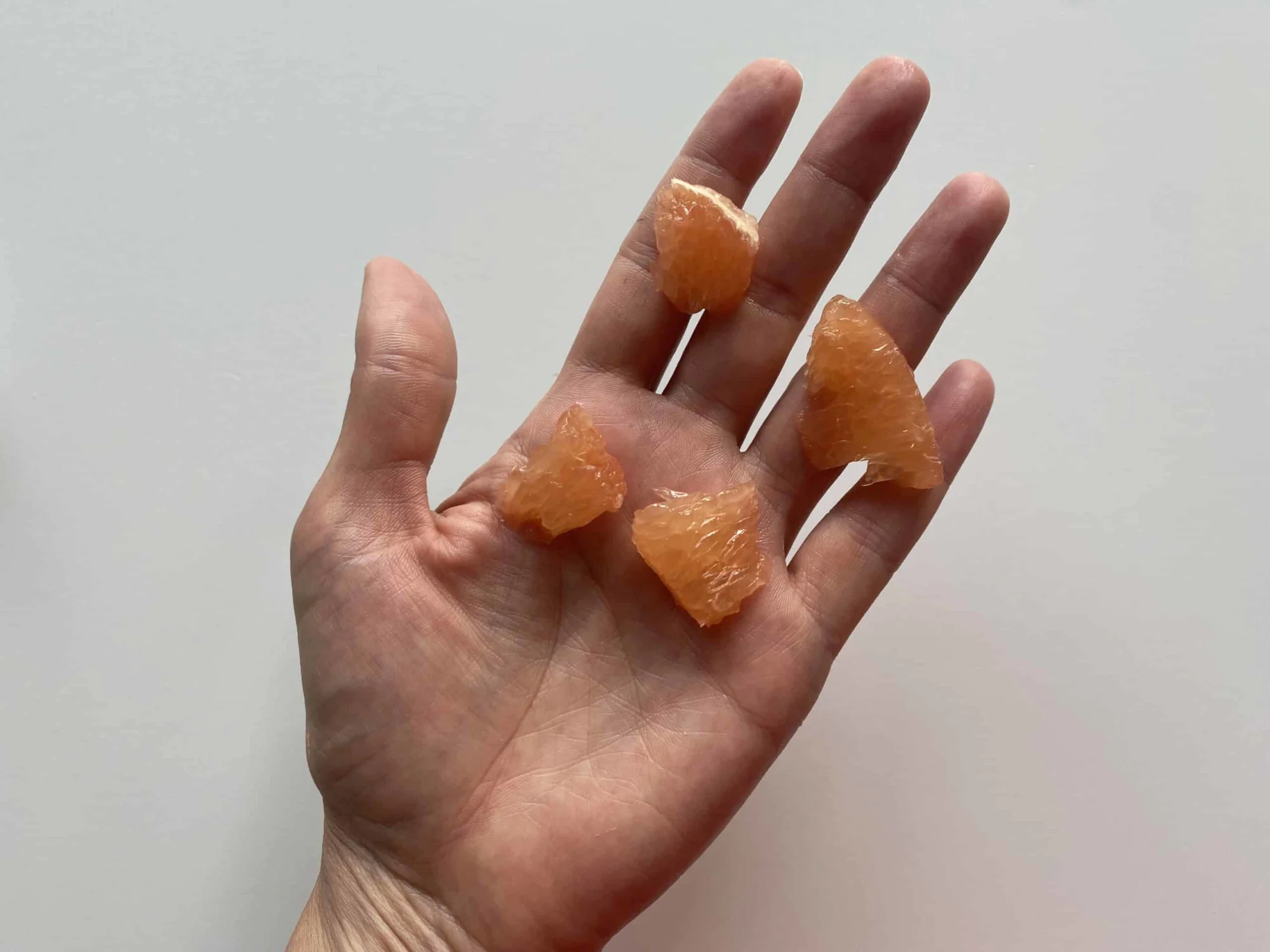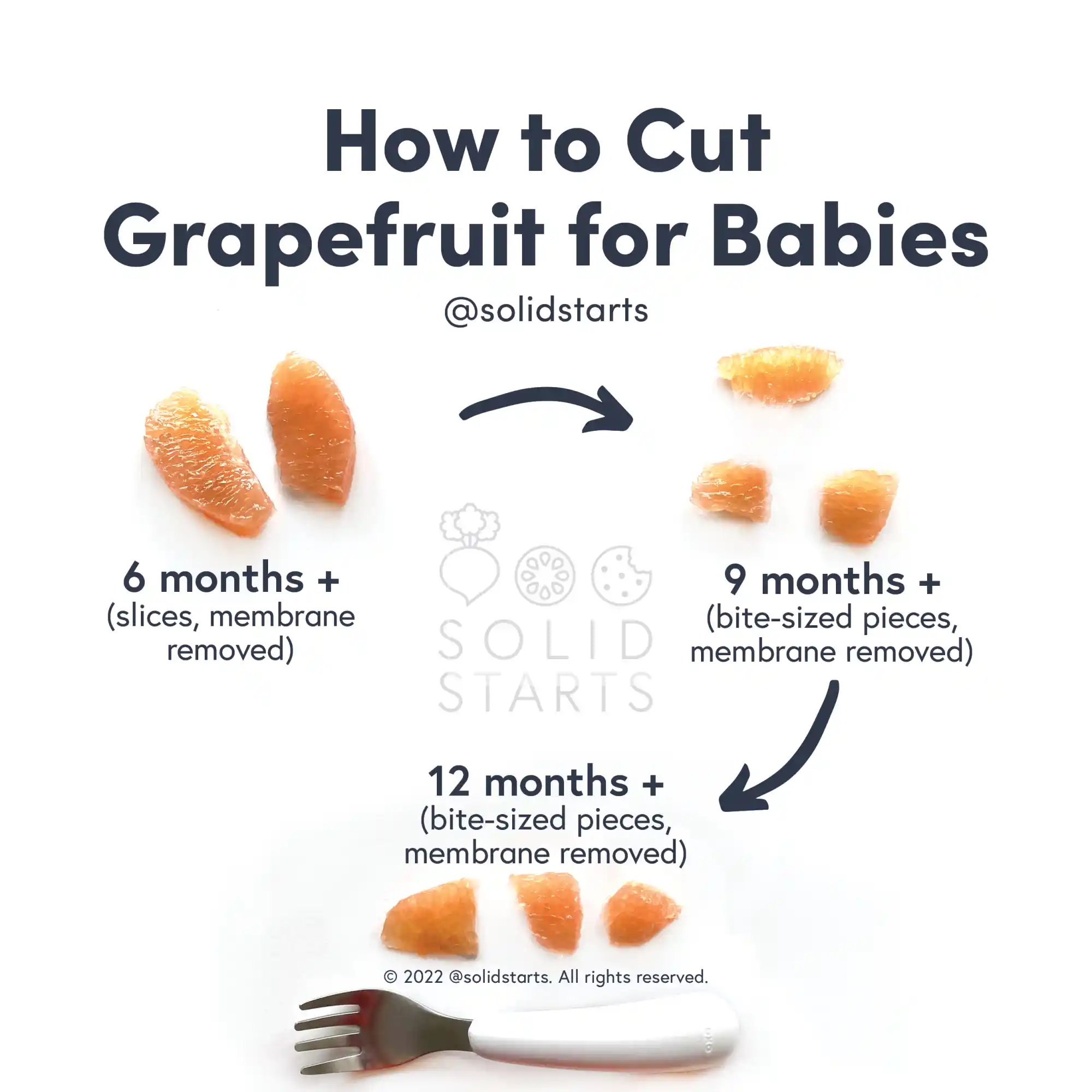Access our First Foods® Database in the Solid Starts App.
Learn moreGrapefruit
Fruit
Age Suggestion
6 months
Iron-Rich
No
Common Allergen
No

When can babies have grapefruit?
Grapefruit may be introduced as soon as baby is ready to start solids, which is generally around 6 months of age. Note that grapefruit and other acidic foods can cause a harmless rash on skin that comes into contact with the juices and can contribute to diaper rash.
Grapefruits are a hybrid citrus from the Caribbean Islands. The bittersweet fruit was cultivated from the seeds of sugary oranges and tart pomelos brought to the American tropics from Asia during colonization and trade in the 17th century. From grapefruit came new branches on the citrus family tree: minneola, oroblanco, tangelo, and uglifruit are all relatives.
How do you serve grapefruit to babies?
Every baby develops on their own timeline, and the suggestions on how to cut or prepare particular foods are generalizations for a broad audience.
6 months old +:
Serve whole grapefruit segments with the peel, membrane, and seeds removed. If baby bites off a big piece, stay calm as this is a learning moment. It’s important to give baby an opportunity to independently work the food out of their mouth. Refrain from sticking your fingers in baby’s mouth, which can inadvertently push the food further back on the tongue.
9 months old +:
Offer thin slices or bite-sized pieces of grapefruit segments with the membrane and seeds removed. This size helps baby hone the pincer grasp (where the thumb and pointer finger meet).
12 months old +:
Serve bite-sized pieces of grapefruit with the membrane and seeds removed and serve with a fork to encourage utensil use.
24 months old +:
Offer thin slices or bite-size pieces of grapefruit. At this age, feel free to serve a grapefruit cut in half, with seeds removed and each of the small segments loosened with a knife (but not removed from the half) for toddlers to practice scooping from the peel. They may not consume much, but as toddlers go through phases of more selective eating, activities like this can help engage them in a food.


How to prepare grapefruit for babies 6 months+
Avoid common pitfalls that contribute to picky eating. See our Do’s and Don’ts of Raising a Happy, Independent Eater.
Videos
Is grapefruit a choking hazard for babies?
Yes. Citrus segments (if left in the surrounding membrane) are choking hazards for babies and children. Citrus seeds can pose an aspiration risk, as they can be accidentally inhaled. To reduce the risk, supreme the fruit to cut the segments away from the membrane and then remove any seeds. As always, make sure you create a safe eating environment and stay within an arm’s reach of baby during meals. For more information on choking, visit our section on gagging and choking and familiarize yourself with the list of common choking hazards.
Is grapefruit a common allergen?
No. Grapefruit is not considered to be a common food allergen. However, self-reported sensitivity to citrus is described frequently in medical literature around the world.
Individuals with Oral Allergy Syndrome (also called pollen food allergy syndrome) may be sensitive to grapefruit and other citrus fruits. In particular, individuals who are allergic to grass and certain tree pollens may also be more sensitive to citrus fruits. Oral Allergy Syndrome typically results in short-lived itching, tingling, or burning in the mouth and is unlikely to result in a dangerous reaction. Peeling grapefruit can help minimize the reaction.
Acidic foods like grapefruit and other citrus can cause a harmless rash when they come into contact with the skin. It usually dissipates after a short time. Additionally, the acid can be irritating to a baby’s digestive tract, as well as cause or worsen diaper rashes when consumed in excess. Barrier ointments (such as pure petroleum jelly or a plant-based oil/wax combination) can be applied to the face before mealtime, as well as to the diaper area, to help protect the skin from acidic foods. The peel of grapefruit also contains a compound called limonene, which is a known contact allergen, and can cause allergic contact dermatitis in sensitized individuals.
Lastly, grapefruit is associated with phytophotodermatitis, a skin condition that occurs when a person gets the juice from the fruit on the skin and doesn't wash it off. Compounds in the juice are activated by the sun and cause a pigmented, itchy, and occasionally blistering and painful rash on the skin. Cleansing the skin after citrus contact and using sun protection can help to prevent the phytophotodermatitis rash.
As you would when introducing any new food, start by offering a small quantity for the first few servings. If there is no adverse reaction, gradually increase the quantity over future meals.
Is grapefruit healthy for babies?
Yes. Grapefruit is rich in carbohydrates, fiber, and fluid, in addition to vitamins A, B6, and C. It also offers potassium, folate, and antioxidants like lycopene. Together, the nutrients work together to provide energy to fuel baby’s play and development, support digestive health, and aid in hydration. These nutrients also support vision, metabolism, immune function, electrolyte balance, nervous system functioning, and bodily repair and recovery.
If baby is taking medications, consult with a pediatrician or pediatric dietitian or nutritionist before offering grapefruit to baby, as grapefruit contains high levels of a compound that affects how the body breaks down and utilizes certain medications.
When can babies drink grapefruit juice?
Wait to serve grapefruit juice as a drink until after 12 months of age. That said, it can be beneficial to wait until after a child’s 2nd birthday to regularly share juice and other sugary drinks. Research suggests that regular intake of juice and other sweet drinks tends to increase the risk of dental cavities and take up space in the belly, which may decrease a child’s motivation to eat other foods at mealtime and may negatively affect the child’s growth. However, occasional servings of juice after one year of age generally isn’t a cause for concern. Learn more about serving juice to babies and toddlers.
Our Team
Written by
Expert Tips Delivered to Your Inbox
Sign up for weekly tips, recipes and more!
Copyright © 2025 • Solid Starts Inc







